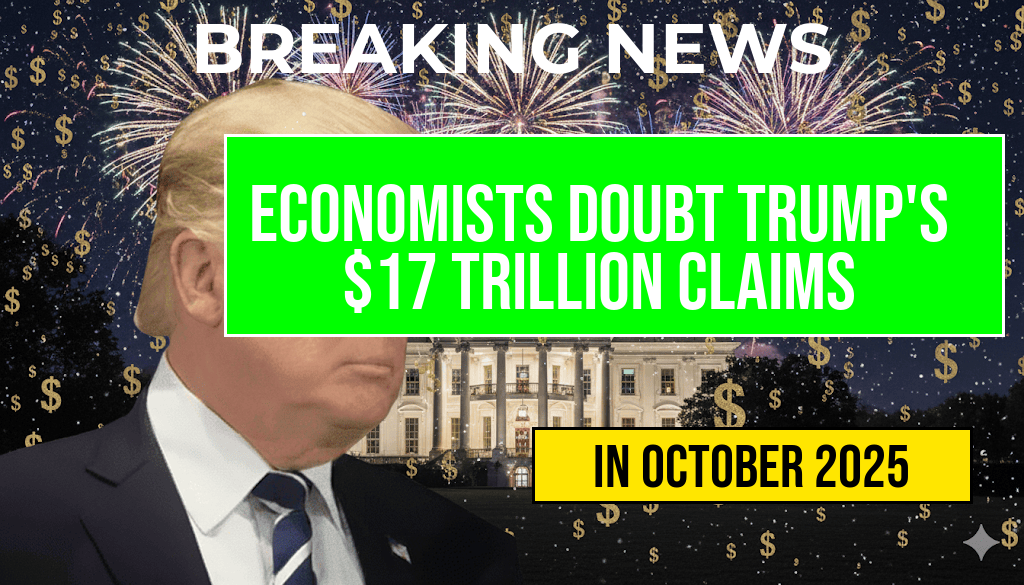Economists are raising eyebrows over former President Donald Trump’s assertion that his administration’s policies could lead to a staggering $17 trillion in global investments. The claim, which was a centerpiece of his recent speeches, has prompted skepticism among financial experts who argue that such figures lack substantial backing and rely on overly optimistic projections. Critics point out that while the U.S. economy has experienced growth since Trump’s presidency, the actual impacts of his policies on global investment flows remain ambiguous and contentious. This article delves into the details behind Trump’s investment claim and examines the broader implications for economic policy and international relations.
Understanding the $17 Trillion Claim
During his tenure, Trump touted various economic achievements, including tax cuts and deregulation, which he argued would stimulate both domestic and global investment. His recent comments suggest that these policies could result in a monumental influx of capital into the U.S. and allied markets. However, economists question the feasibility of reaching such a high figure, emphasizing the need for a more nuanced understanding of investment dynamics.
Critics Weigh In
Many economists have voiced their concerns regarding the methodologies behind Trump’s claims. According to Forbes, economists argue that the actual increase in foreign direct investment (FDI) has not kept pace with Trump’s ambitious projections. Key points of contention include:
- Lack of Empirical Data: Critics highlight that Trump’s assertions are not supported by robust statistical evidence.
- Global Economic Trends: The broader context of global economic uncertainty, including trade tensions and the ongoing effects of the COVID-19 pandemic, complicates investment forecasts.
- Policy Sustainability: Questions arise about whether policies enacted during Trump’s presidency can be maintained or replicated in the future.
Economic Context
To understand the claims made by Trump, it is essential to examine the economic landscape during his administration. Following his election in 2016, the U.S. saw a rise in stock market performance and a decrease in unemployment rates. However, the benefits of these improvements were unevenly distributed, leading to debates over the true impact of Trump’s economic policies.
Key Economic Indicators
| Year | GDP Growth Rate (%) | Unemployment Rate (%) | Foreign Direct Investment ($ Billion) |
|---|---|---|---|
| 2017 | 2.4 | 4.4 | 277 |
| 2018 | 2.9 | 3.9 | 298 |
| 2019 | 2.3 | 3.7 | 251 |
| 2020 | -3.4 | 8.1 | 130 |
As the table illustrates, while there were increases in GDP and a decline in unemployment during the first years of Trump’s presidency, the onset of the pandemic in 2020 drastically affected economic performance and foreign investment levels.
Looking Ahead
The debate surrounding Trump’s investment claims is likely to continue as the political landscape evolves. Economists emphasize that sustainable economic growth relies on sound fiscal policies, market stability, and international cooperation. As the world grapples with post-pandemic recovery, understanding the factors that drive global investment will be crucial for policymakers and business leaders alike.
For those interested in deeper insights into economic trends and investment strategies, resources such as Investopedia and the International Monetary Fund (IMF) provide extensive data and analysis.
Frequently Asked Questions
What are the main claims made by Trump regarding the $17 trillion global investment?
Trump has claimed that his administration’s policies have spurred $17 trillion in global investments, suggesting significant economic growth and increased business confidence.
Why are economists challenging Trump’s investment claims?
Many economists argue that the $17 trillion figure is inflated and not solely attributable to Trump’s policies. They point to other global economic factors and question the methodologies used to arrive at this number.
What evidence do economists provide to dispute the investment figures?
Economists cite data from various economic reports and analyses indicating that investment trends were already on the rise prior to Trump’s presidency, which challenges the notion that his policies are the primary drivers of this growth.
How do Trump’s supporters respond to the economists’ critiques?
Supporters of Trump argue that while previous trends may have existed, the business climate has improved under his administration, leading to increased investments that they believe validate his claims.
What implications do these investment claims have on economic policy?
The debate over the $17 trillion investment claims could impact future economic policies and initiatives, as policymakers may rely on these figures to justify or adjust their strategies for promoting growth and investment.

Leave a Reply